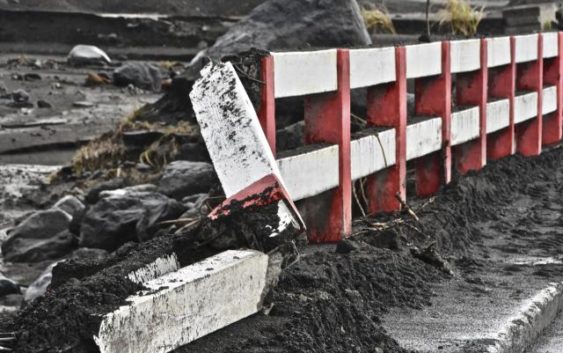- What to do during a tornado warning
- Storm damage reported after possible tornado in Union County
- Live updates: Severe thunderstorm warning issued for Durham & Chapel Hill; reports of possible tornado damage near Charlotte
- Storm damage reported in Union County, NC
- Live updates: 1st tornado warning of the day issued for Forsyth County
Flooding and mudslides add to St. Vincent's volcano woes

KINGSTOWN, St. Vincent — Heavy rains poured down on the island of St. Vincent and the Grenadines on Thursday, causing flooding and mudslides that damaged some homes and further battered areas already burdened by heavy ashfall from eruptions of La Soufriere volcano.
Authorities said there were no reports of deaths or injuries as the storm deluged the Caribbean nation for hours, with some areas receiving from 3 inches (7.5 centimeters) to 5 inches (12.5 centimeters) of rain. Forecasters warned that an additional 2 inches (5 centimeters) were possible over the next 24 hours.
There were reports of caved-in roofs and some structures wrecked by landslides and flooding in rural areas, and authorities said bridges also sustained damage. Problems in Kingstown, the capital, were confined to high water.
“I drove my vehicle into Kingstown this morning. However, if the flood doesn’t clear, I may have to leave it in the city,” said Darren Williams, a salesman.
The troubles follow a series of eruptions at La Soufriere that began April 9 and blanketed parts of St. Vincent island with heavy ash that has damaged buildings and ruined farm fields. Over 20,000 people have had to leave their homes and the water supply and electricity were disrupted.
Roderick Stewart, a volcano seismologist at the University of the West Indies Seismic Research Center, said on the state radio station that monitoring equipment had registered indications of lahars, dangerous slides of fast-moving volcanic ash turned into slurry by the rainstorm.
“Our seismometers have been picking up signals from lahars in several locations, so we suspect there are lahars in all the major drainages and it may have caused quite a lot of damage as it passed down from the volcano into the sea,” Stewart said.
He said the volcano itself had been relatively quiet recently.
“It does seem to be going back — I won’t say to sleep, cause that’s a bit hopeful — but it does seem to be quieting down,” Stewart said.